World trends and opportunities for Vietnam
According to information at the Vietnam Low-Altitude Economic Forum 2025 sponsored by the National Innovation Center (NIC) - Ministry of Finance organized on November 14, low-altitude economy (LAE) is economic activities taking place below an altitude of 1,000 m, which can be expanded to below 5,000 m depending on the actual needs of each country.
This model can take advantage of drone and unmanned flight technology, low-altitude intelligent networks to develop infrastructure, produce flying vehicles, services and ensure flight safety, mainly based on the application of unmanned aerial vehicles (UAVs) and related technologies in fields such as: agriculture , logistics, environmental monitoring, transportation, communication and entertainment...
This is considered a new economic space, taking advantage of the low atmosphere that has not been effectively exploited to create value through advanced technology.
Low-cost economy is not only a technological trend, but also a national development strategy, converging three core values, including: innovation, high productivity and sustainable development.
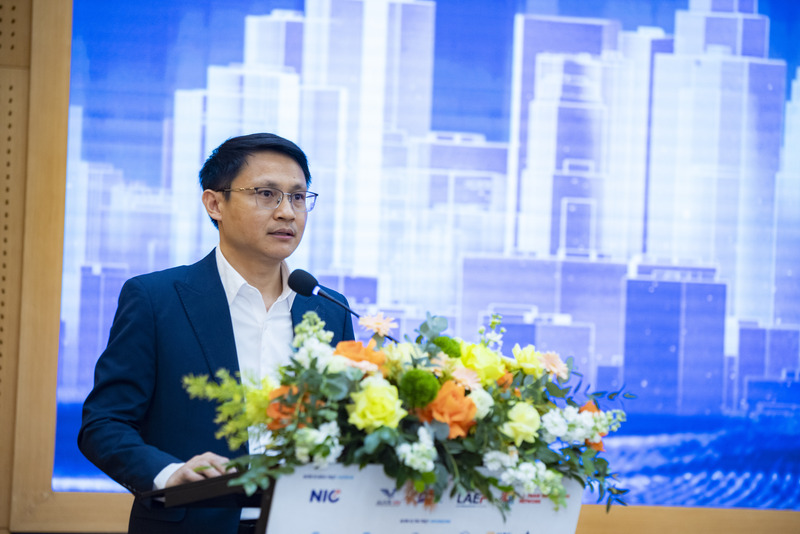
Mr. Vo Xuan Hoai - Deputy Director of the National Innovation Center spoke at the forum. Photo: TT.
Ms. Nguyen Thi Hai Hang - Vice President of the Aviation, Space, Unmanned Aerial Vehicles Network (AUVS VN), Director of the Vietnam Aviation Academy said that low-altitude economics is a strategic shift, opening up low airspace as a new business space, promoting Vietnam's economic growth through technological innovation.
According to calculations, the low-altitude aviation industry alone is expected to be valued at about 700 billion USD by 2035. In Vietnam, the potential of the low-altitude economy is estimated to reach 10 billion USD. With geopolitical advantages, policies to encourage innovation, a young and dynamic workforce, Vietnam is facing a "once-in-a-lifetime opportunity" to become the low-altitude industrial center of the region and the world.
Mr. Vo Xuan Hoai - Deputy Director of the National Innovation Center informed that many countries in the world have considered aerospace and UAV as strategic technology industries. With the explosion of aviation, space and unmanned aerial vehicle technology, the new economic model, specifically the "low-level economy" is becoming a prominent development trend globally.
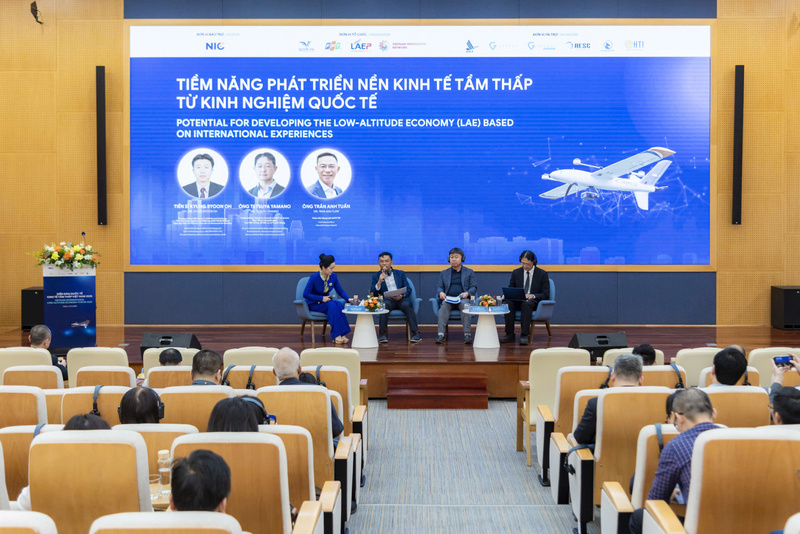
Speakers discussed the potential for low-level economic development within the framework of the forum. Photo: TT.
New growth drivers for Vietnam
Mr. Tran Anh Tuan - Vice President of AUVS VN Network, CEO of Saolatek Company, commented that Vietnam has all the advantages to become a low-level economic center thanks to its stable geographical and political position, potential to master core technology (software, AI and UTM system), hardware production capacity and a complete ecosystem of supporting industries.
Mr. Vu Anh Tu - Technology Director of FPT Corporation - member of AUVS VN network assessed that low-level economy opens up new growth momentum. Vietnam can take off with intelligence, technology and multi-dimensional cooperation between: State - enterprises, schools, institutes and people.
Seizing the opportunity, low-level economic investment will promote the three pillars of the new era in Vietnam: digital economy, green economy, knowledge economy. At the same time, awakening the creative potential of Vietnamese engineers and scientists, bringing better services to people in remote areas and islands, thereby affirming Vietnam's position on the global technology map.
The International Forum on Low-Altitude Economy 2025 also noted many policy proposals in building a sandbox policy framework, developing low-altitude airspace management infrastructure, and promoting research and production of unmanned aerial vehicles, serving socio-economic fields, opening up a new direction for the country in the era of low-altitude aviation, creating a platform to connect resources, share knowledge and promote the application of modern technologies.
In particular, according to Mr. Tran Anh Tuan, to take advantage of opportunities for low-altitude economic development, Vietnam needs to build a flexible legal corridor for low-altitude airspace; focus on investing in domestic research and development; develop industrial clusters for low-altitude economy and testing centers; train and develop high-quality human resources and build a comprehensive ecosystem of connectivity and international cooperation.
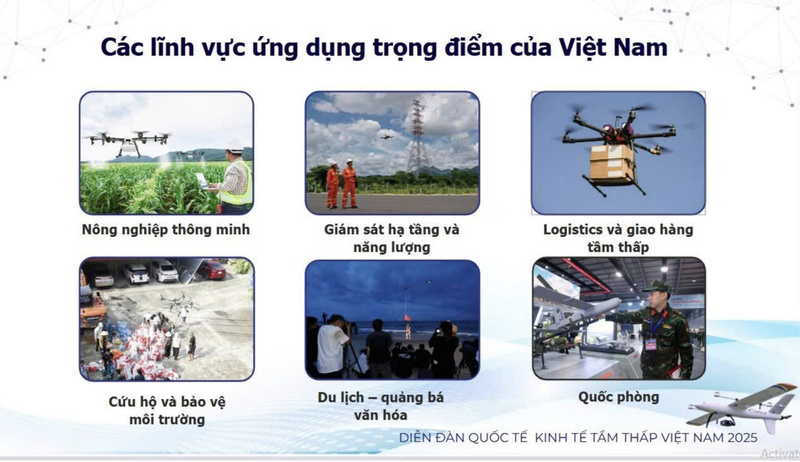
Fields that can apply low-level economics in Vietnam. Photo: NH.
Low-level economics can be applied to a number of industries and fields in Vietnam such as smart agriculture; infrastructure and energy monitoring; logistics and low-level delivery; rescue and environmental protection; tourism and cultural promotion; and national defense.
Source: https://congthuong.vn/viet-nam-truoc-co-hoi-ngan-nam-tu-kinh-te-tam-thap-430429.html


![[Photo] Special class in Tra Linh](https://vphoto.vietnam.vn/thumb/1200x675/vietnam/resource/IMAGE/2025/11/14/1763078485441_ndo_br_lop-hoc-7-jpg.webp)

![[Photo] Unique architecture of the deepest metro station in France](https://vphoto.vietnam.vn/thumb/1200x675/vietnam/resource/IMAGE/2025/11/14/1763107592365_ga-sau-nhat-nuoc-phap-duy-1-6403-jpg.webp)
![[Photo] Unique art of painting Tuong masks](https://vphoto.vietnam.vn/thumb/1200x675/vietnam/resource/IMAGE/2025/11/14/1763094089301_ndo_br_1-jpg.webp)


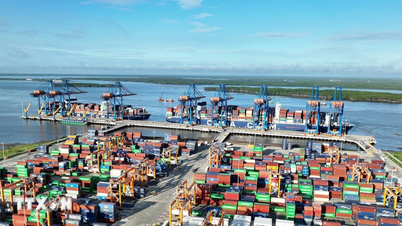

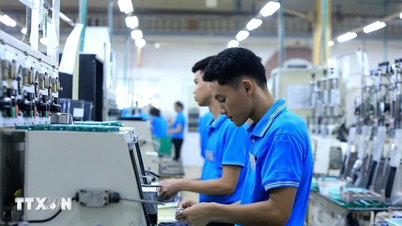





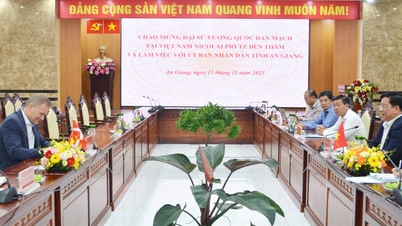



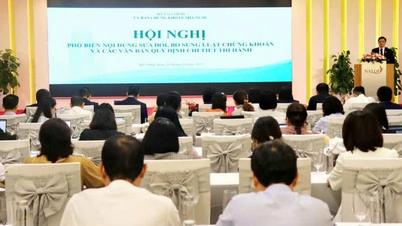


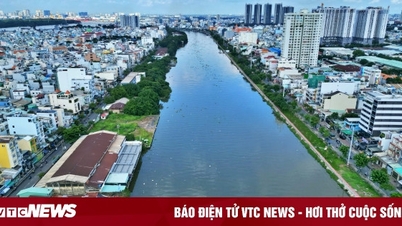


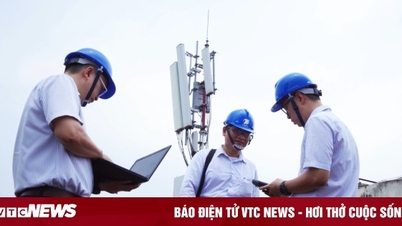








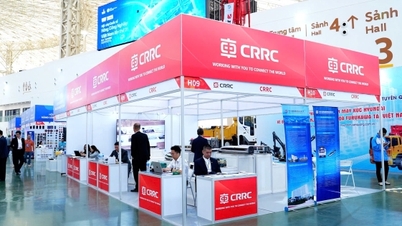









































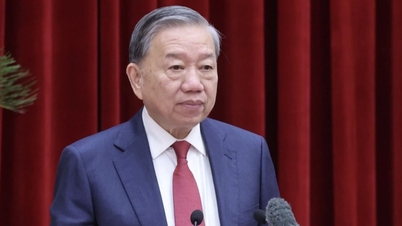





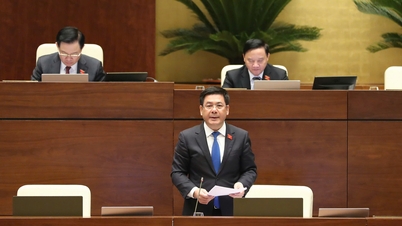




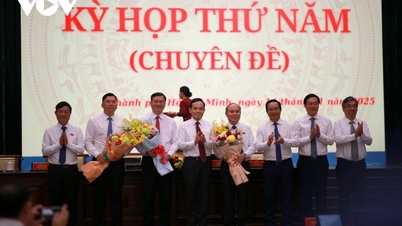

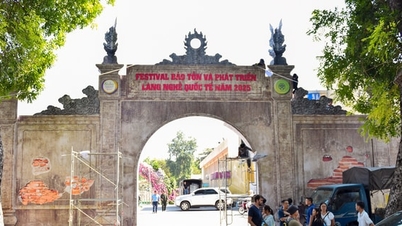

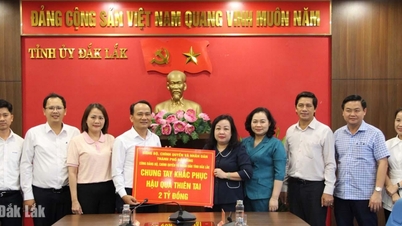

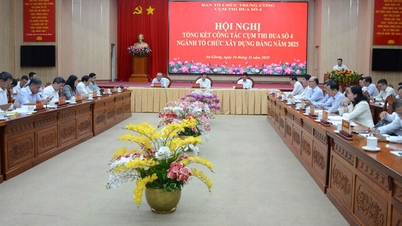

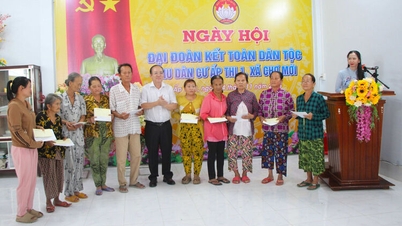













Comment (0)